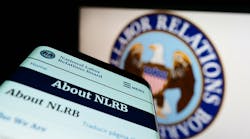During the recession, having a well developed time-off program was essential for companies looking for a way to compensate employees, without stretching already thin budgets. Now, as companies push toward recovery, time-off programs are one of the cornerstones of highly competitive compensation programs attracting the best talent, according to the results of a Compdata survey of 414 service employers reporting on nearly 2,900 locations across the country. Compdata Surveys is a pay and benefits survey data provider.
The survey also found employers offer exempt employees with one full year of service an average of 10.6 vacation days, while non-exempt employees receive 9.8 days.
Exempt employees with five years of service earn 14 days of vacation, compared to the 17.3 days of those with ten years of service. Employees with 15 years of service receive 19.3 vacation days. In addition, both exempt and non-exempt employees are granted an average of four personal days and seven sick days each year. The average waiting period for employees to receive time-off benefits after the start of employment is 81.7 days.
“Maintaining a healthy work-life balance is more important to workers today than ever before,” said Amy Kaminski, director of marketing for Compdata Surveys. “By developing a comprehensive time-off program, employers are helping their employees achieve this balance, and are often rewarded with increased productivity in return.”
Formal paid time-off (PTO) programs are gaining prevalence, as the survey results found 38.1 percent of service employers now offer a PTO program to employees. PTO programs group together all paid absences, including vacation, sick and personal days. Exempt employees with at least one year of service earn an average 15.1 days of PTO per year. Those with five years of service receive 19.9 days, while those with ten years of service average 22.6 days.
Nearly 79 percent of service organizations allow employees to carry over unused PTO, but 84.2 percent place a limit on the number of days that can be carried over. Exempt employees may carry over an average of 23.6 days, while non-exempt employees are allowed to carry over an average of 23.1 days.
For further information about this survey, contact Michelle Willis at 800-300-9570.


